2-(3,4-Dihydroxyphenyl)ethanol

2-(3,4-Dihydroxyphenyl)ethanol structure
|
Common Name | 2-(3,4-Dihydroxyphenyl)ethanol | ||
|---|---|---|---|---|
| CAS Number | 10597-60-1 | Molecular Weight | 154.163 | |
| Density | 1.3±0.1 g/cm3 | Boiling Point | 355.4±27.0 °C at 760 mmHg | |
| Molecular Formula | C8H10O3 | Melting Point | N/A | |
| MSDS | Chinese USA | Flash Point | 182.6±18.3 °C | |
| Symbol |

GHS07 |
Signal Word | Warning | |
Use of 2-(3,4-Dihydroxyphenyl)ethanolHydroxytyrosol (DOPET) is a phenolic compound drawn from the olive tree and its leaves with anti-oxidant, anti-atherogenic, anti-thrombotic, antimicrobial, anti-inflammatory and anti-tumour effects[1][2]. |
| Name | hydroxytyrosol |
|---|---|
| Synonym | More Synonyms |
| Description | Hydroxytyrosol (DOPET) is a phenolic compound drawn from the olive tree and its leaves with anti-oxidant, anti-atherogenic, anti-thrombotic, antimicrobial, anti-inflammatory and anti-tumour effects[1][2]. |
|---|---|
| Related Catalog | |
| In Vitro | Hydroxytyrosol (DOPET) shows the inhibition of pro-inflammatory cytokines (TNF-α) and reduces the expression of cyclooxygenase-2 and inducible nitric oxide synthase (iNOS) more than 60%[1]. Hydroxytyrosol (DOPET) modulates the transcription factor NF-κB[1]. Hydroxytyrosol (DOPET) arrests the cell cycle, producing differentiation, apoptosis, or preventing DNA from oxidative stress[1]. |
| References |
| Density | 1.3±0.1 g/cm3 |
|---|---|
| Boiling Point | 355.4±27.0 °C at 760 mmHg |
| Molecular Formula | C8H10O3 |
| Molecular Weight | 154.163 |
| Flash Point | 182.6±18.3 °C |
| Exact Mass | 154.062988 |
| PSA | 60.69000 |
| LogP | 0.02 |
| Vapour Pressure | 0.0±0.8 mmHg at 25°C |
| Index of Refraction | 1.623 |
| InChIKey | JUUBCHWRXWPFFH-UHFFFAOYSA-N |
| SMILES | OCCc1ccc(O)c(O)c1 |
| Storage condition | Refrigerator |
| Symbol |

GHS07 |
|---|---|
| Signal Word | Warning |
| Hazard Statements | H315-H319-H335 |
| Precautionary Statements | P261-P305 + P351 + P338 |
| Hazard Codes | Xi |
| Risk Phrases | 36/37/38 |
| Safety Phrases | 26 |
| RIDADR | NONH for all modes of transport |
| HS Code | 2907299090 |
| Precursor 9 | |
|---|---|
| DownStream 4 | |
| HS Code | 2907299090 |
|---|---|
| Summary | 2907299090 polyphenols; phenol-alcohols。supervision conditions:AB(certificate of inspection for goods inward,certificate of inspection for goods outward)。VAT:17.0%。tax rebate rate:9.0%。MFN tariff:5.5%。general tariff:30.0% |
|
Bioconversion of oleuropein to hydroxytyrosol by lactic acid bacteria.
World J. Microbiol. Biotechnol. 28(6) , 2435-40, (2012) The aim of this work is to study the conversion of oleuropein-a polyphenol present in olives and olive oil by-products-into hydroxytyrosol, a polyphenol with antioxidant and antibacterial properties. ... |
|
|
Factors influencing phenolic compounds in table olives (Olea europaea).
J. Agric. Food Chem. 60(29) , 7081-95, (2012) The Mediterranean diet appears to be associated with a reduced risk of several chronic diseases including cancer and cardiovascular and Alzheimer's diseases. Olive products (mainly olive oil and table... |
|
|
Identification of the factors responsible for the in vitro pro-oxidant and cytotoxic activities of the olive polyphenols oleuropein and hydroxytyrosol.
Cancer Lett. 330(1) , 113-21, (2013) The olive polyphenols oleuropein and hydroxytyrosol were reported recently to produce extracellular hydrogen peroxide (H2O2) under standard culture conditions. The precise factors responsible for this... |
| Hydroxytyrosol |
| 4-(2-Hydroxyethyl)-1,2-benzenediol |
| 4-(2-hydroxyethyl)benzene-1,2-diol |
| 3,4-Dihydroxyphenylethanol |
| MFCD01320529 |
| 3,4-Dihydroxyphenethylalcohol |
| 3,4-Dihydroxyphenethyl Alcohol |
| 1,2-Benzenediol, 4-(2-hydroxyethyl)- |
| 2-(3,4-Dihydroxyphenyl)ethanol |
| 2-(3,4-Dihydroxyphenyl)ethyl Alcohol |
 CAS#:96826-11-8
CAS#:96826-11-8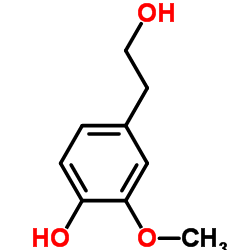 CAS#:2380-78-1
CAS#:2380-78-1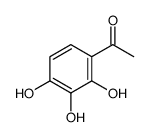 CAS#:29477-54-1
CAS#:29477-54-1 CAS#:7417-21-2
CAS#:7417-21-2 CAS#:119054-91-0
CAS#:119054-91-0 CAS#:102-32-9
CAS#:102-32-9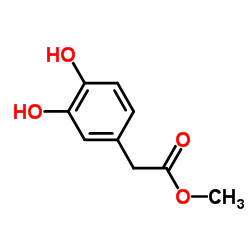 CAS#:25379-88-8
CAS#:25379-88-8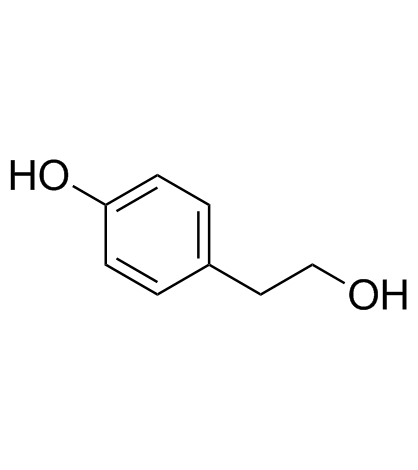 CAS#:501-94-0
CAS#:501-94-0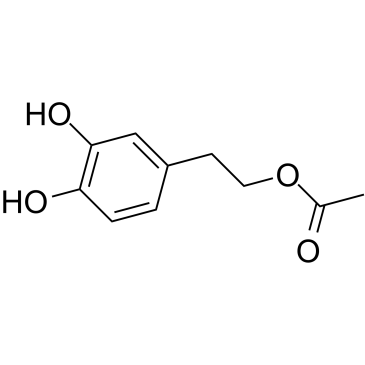 CAS#:69039-02-7
CAS#:69039-02-7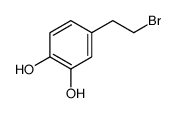 CAS#:220556-03-6
CAS#:220556-03-6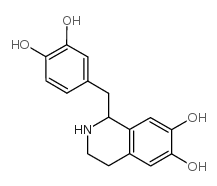 CAS#:4747-99-3
CAS#:4747-99-3 CAS#:5707-55-1
CAS#:5707-55-1
